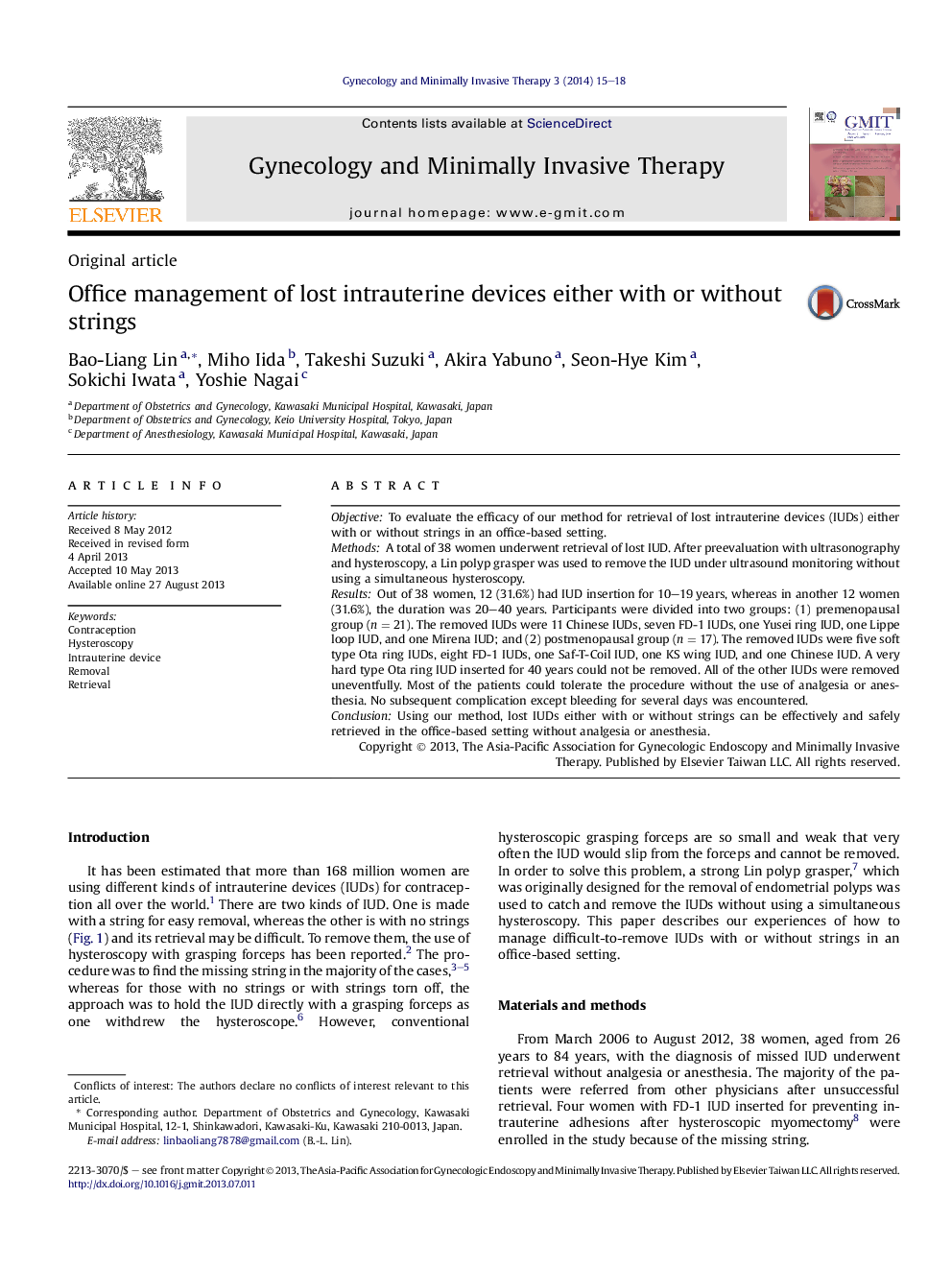| Article ID | Journal | Published Year | Pages | File Type |
|---|---|---|---|---|
| 3953772 | Gynecology and Minimally Invasive Therapy | 2014 | 4 Pages |
ObjectiveTo evaluate the efficacy of our method for retrieval of lost intrauterine devices (IUDs) either with or without strings in an office-based setting.MethodsA total of 38 women underwent retrieval of lost IUD. After preevaluation with ultrasonography and hysteroscopy, a Lin polyp grasper was used to remove the IUD under ultrasound monitoring without using a simultaneous hysteroscopy.ResultsOut of 38 women, 12 (31.6%) had IUD insertion for 10–19 years, whereas in another 12 women (31.6%), the duration was 20–40 years. Participants were divided into two groups: (1) premenopausal group (n = 21). The removed IUDs were 11 Chinese IUDs, seven FD-1 IUDs, one Yusei ring IUD, one Lippe loop IUD, and one Mirena IUD; and (2) postmenopausal group (n = 17). The removed IUDs were five soft type Ota ring IUDs, eight FD-1 IUDs, one Saf-T-Coil IUD, one KS wing IUD, and one Chinese IUD. A very hard type Ota ring IUD inserted for 40 years could not be removed. All of the other IUDs were removed uneventfully. Most of the patients could tolerate the procedure without the use of analgesia or anesthesia. No subsequent complication except bleeding for several days was encountered.ConclusionUsing our method, lost IUDs either with or without strings can be effectively and safely retrieved in the office-based setting without analgesia or anesthesia.
